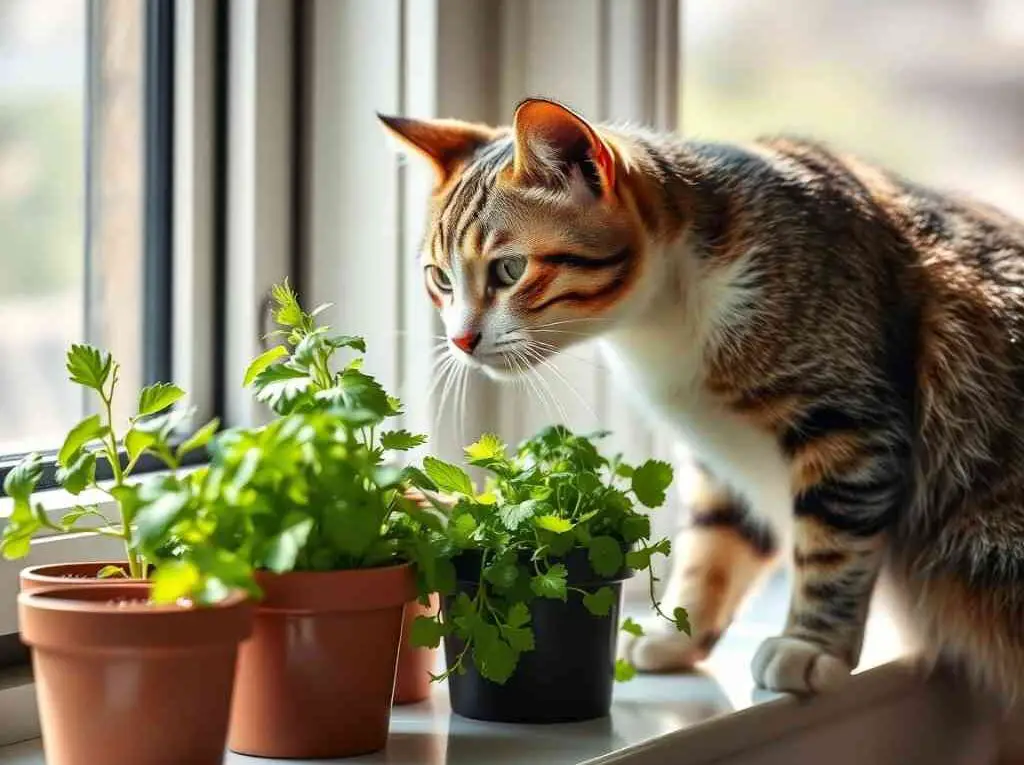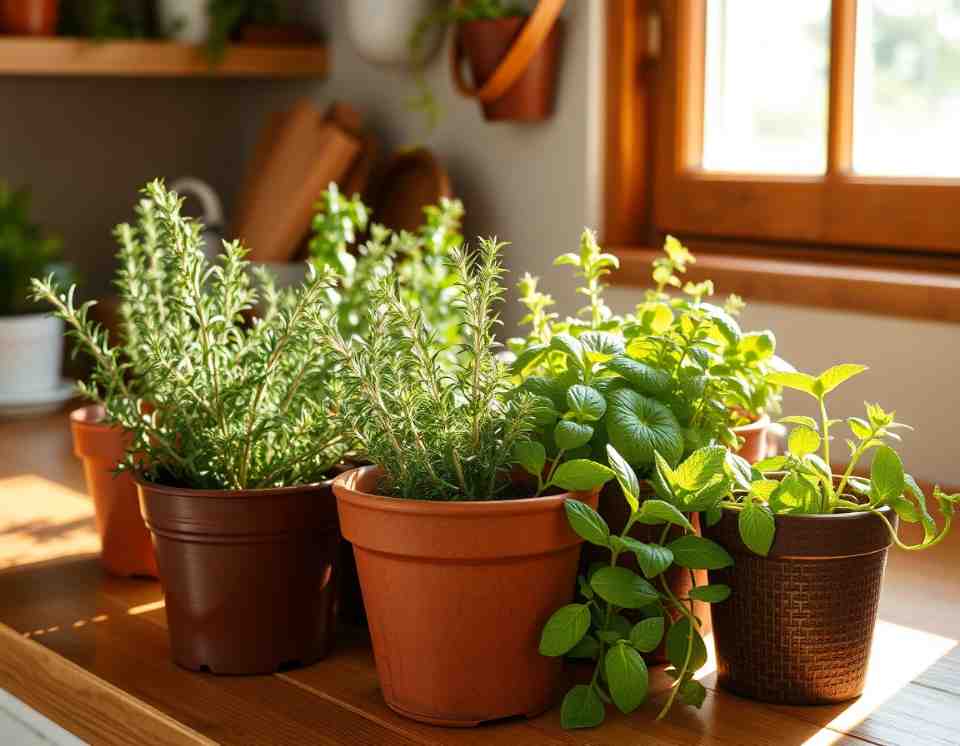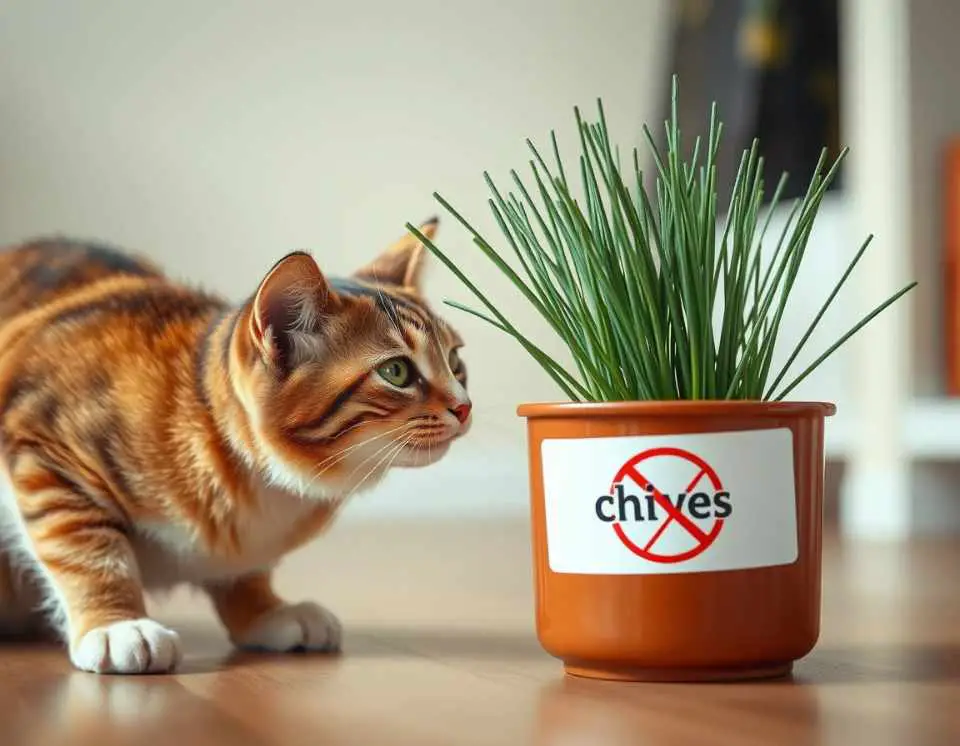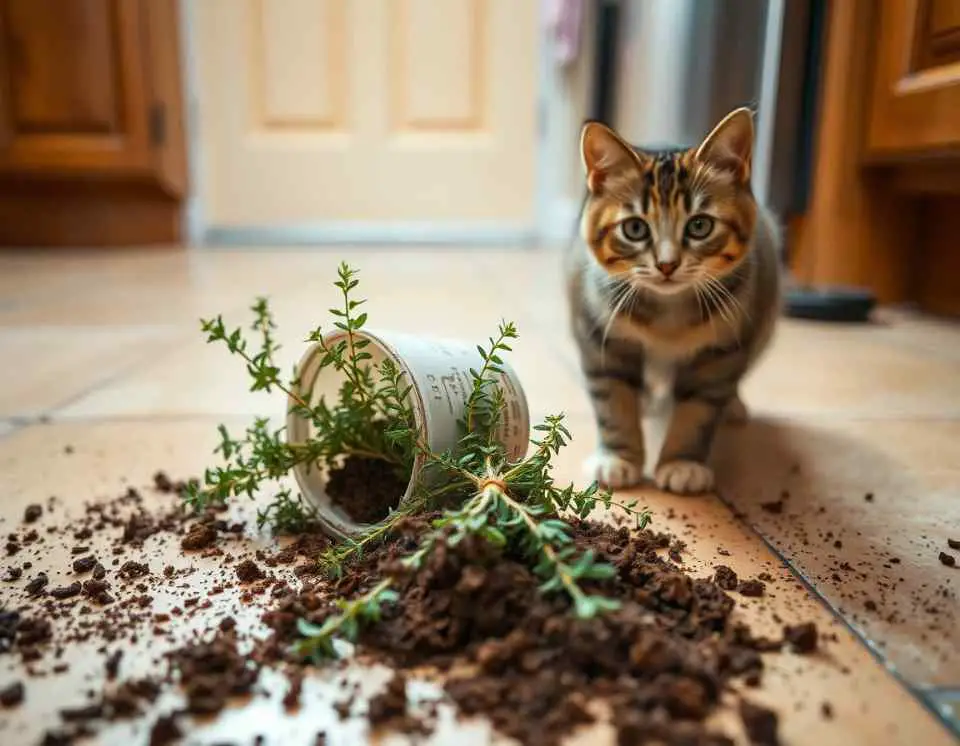Which Herbs Are Safe for Cats? Avoid These Mistakes!
Let’s be real: cats are nosy. If you’ve ever tried to grow a cute little herb garden, you’ve probably caught your furry roommate sniffing, pawing, or straight-up munching on your basil. 🙄 And while it looks innocent (I mean, how dangerous could a leaf be?), not every herb is safe for our curious little chaos gremlins.
So if you’ve ever googled “which herbs are safe for cats?” while watching Whiskers nibble on your rosemary, you’re in the right place. I’ve lived this exact scenario—and spoiler: not all herbs get the green light.
Table of Contents
- 1 Why You Should Care About Herbs and Cats
- 2 Safe Herbs for Cats (a.k.a. Green Light)
- 3 Herbs to Avoid Like the Plague (aka Hard No)
- 4 What About Rosemary, Sage, or Cilantro?
- 5 How to Safely Grow Herbs Around Cats
- 6 Fun Idea: Make a Cat Herb Garden
- 7 One Quick Story Before You Go…
- 8 Final Thoughts: Don’t Let Your Herbs Bite Back
- 9 Author
Why You Should Care About Herbs and Cats
Let’s start here: cats process plant compounds very differently than humans (and dogs, for that matter). Their livers can’t handle certain essential oils and alkaloids that are harmless to us.
Ever wonder why cats ignore carrots but go ham on catnip? Yeah, nature wired them weird.
So before you grow a countertop jungle or share your pesto garden with your kitty, make sure you know what’s safe, what’s not, and what might turn your vet bill into a horror story.
Safe Herbs for Cats (a.k.a. Green Light)
Let’s get the good stuff out of the way. Here are some herbs you can safely grow around cats—and yes, some of them even have health benefits for your feline friend.
Catnip (duh)
- Scientific name: Nepeta cataria
- Effects: Euphoria, zoomies, and dramatic flopping
This one’s the Beyoncé of herbs for cats. About 50–70% of cats react to catnip, rolling in it like they’ve found cat heaven. It’s totally safe and even has mild stress-relief properties.
Pro tip: Don’t overdo it. Cats can build up tolerance or get bored. Yes, even with catnip.
Cat Grass (usually wheatgrass)
- Includes: Wheatgrass, oat grass, barley grass
- Benefits: Helps with digestion and hairball control
Think of it as kitty salad. Cat grass isn’t technically an herb, but it’s a super common indoor plant for cats to chew on.
Ever found green vomit on the rug? Yeah. That’s the cat grass at work. It’s gross, but also kinda helping.
Valerian
- Scientific name: Valeriana officinalis
- Effects: Similar to catnip but often stronger
IMO, valerian is catnip’s edgier cousin. Some cats prefer it, especially if they don’t respond to catnip. The root is the good stuff—smelly to us, irresistible to them.
FYI: It’ll make your house smell like dirty socks. But the cat? Obsessed.
Dandelion
- Yup, those “weeds”
- Uses: Aids digestion and is anti-inflammatory
Most people yank these out of their yard, but dandelion leaves are totally safe for cats. You can even buy them dried and sprinkle a little on your cat’s food.
Would I personally eat one? Nah. But my cat? Loves them.
Parsley (in moderation)
- Only the curly kind (flat-leaf contains higher levels of furanocoumarins)
- Benefits: Breath freshener, rich in vitamins
A little parsley now and then is fine, but don’t let your cat snack on a whole bush of it. It’s safe in small doses, but not an all-you-can-eat buffet.
Basil
- Flavorful and surprisingly safe
Basil is safe, though most cats ignore it (probably because it doesn’t get them high). Still, if Whiskers takes a nibble, no need to panic.
Thyme (non-oil varieties)
- A natural antibacterial and antimicrobial
Stick to the fresh plant—never thyme essential oil, which is toxic. But if your kitty rubs against your thyme plant, it’s totally safe.
Herbs to Avoid Like the Plague (aka Hard No)
Okay, now we get to the sketchy stuff. These herbs might look pretty and smell great, but some of them can cause serious health issues for cats.
Lavender
- Sounds calming, right? Yeah… no.
Lavender contains linalool and linalyl acetate—both toxic to cats. Fresh lavender might not be as dangerous as concentrated oils, but it’s still not worth the risk.
And don’t even THINK about using lavender essential oil in a diffuser. Cats + essential oils = vet visit.
Oregano
- Not safe. Period.
Oregano can irritate your cat’s stomach and cause vomiting or diarrhea. Not exactly the “Italian kitchen vibes” you want.
Mint (including peppermint & spearmint)
- Cats + mint = bad combo
Mint contains salicylate, which is toxic to cats in large amounts. Plus, most cats hate the smell (can’t blame them, TBH).
Chives & Garlic
- Belong to the allium family—which is a big red flag
Even small amounts can damage your cat’s red blood cells, leading to anemia. That sprinkle of garlic powder? Yeah, not cute.
Lemongrass
- Okay in tiny amounts, but risky overall
Fresh lemongrass might look harmless, but it contains citral and geraniol, which are toxic to cats. And again, the essential oil is way worse.
What About Rosemary, Sage, or Cilantro?
These are the “gray area” herbs. Here’s what you need to know:
- Rosemary: Safe in small doses, but most cats don’t like it anyway.
- Sage: Also fine in tiny amounts. Just don’t go full herb garden.
- Cilantro: Usually okay, but some cats might get an upset stomach. Test with a nibble.
If your cat treats any of these herbs like a buffet, it’s best to keep them out of reach. Everything in moderation—even for cats.
How to Safely Grow Herbs Around Cats
Let’s say you’re an herb-growing enthusiast (guilty) and a cat lover (also guilty). Can you have both? Yes—but you’ve got to be smart about it.
Here’s how I do it:
- Hang planters where curious paws can’t reach
- Use wall-mounted shelves or window ledges
- Grow risky herbs outdoors only (and block off access)
- Choose non-toxic herbs like catnip or basil for indoor gardens
- When in doubt, check the ASPCA’s toxic plant list
Trust me, it’s easier to grow safe herbs than to explain to your vet why your cat has oregano breath and a stomachache.
Fun Idea: Make a Cat Herb Garden
If you want to go full Pinterest mode, try this:
Your DIY Cat-Safe Herb Kit:
- Catnip (duh)
- Cat grass (wheat or oat)
- Valerian root
- Dandelion leaves
- Parsley (curly only)
Use a wide planter box, keep it near a window, and watch your cat claim it like it’s their new throne. 😸
One Quick Story Before You Go…
Okay, so the first time I grew oregano on my balcony, I thought, “It’s just a kitchen herb. What’s the worst that could happen?”
Then I came home to my cat pawing at her mouth, clearly unhappy, and a shredded oregano plant all over the floor. 😬
Called the vet, did the whole panic-dance, and thankfully she was fine. But that was the last time I grew anything without checking if it could send my cat to the ER.
Final Thoughts: Don’t Let Your Herbs Bite Back
So, which herbs are safe for cats? Here’s the quick recap:
✅ Safe in moderation:
- Catnip
- Cat grass
- Valerian
- Dandelion
- Curly parsley
- Basil
- Fresh thyme
🚫 Avoid completely:
- Lavender
- Oregano
- Mint
- Chives and garlic
- Lemongrass
If your cat treats your herb garden like a salad bar, double-check each plant. It’s better to be the paranoid plant parent than the one cleaning up cat puke at 2 a.m.
And hey—if your cat ignores all the plants and just knocks them off the shelf for fun? Welcome to the club. 😹
Got a favorite cat-safe herb I missed? Let me know—I’m always up for testing new ideas (and cleaning up the mess afterward).










